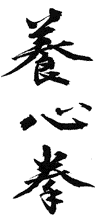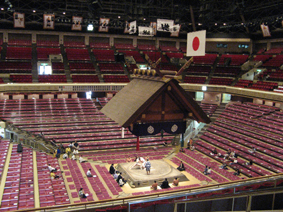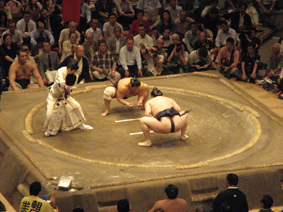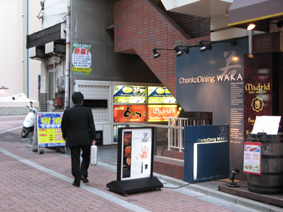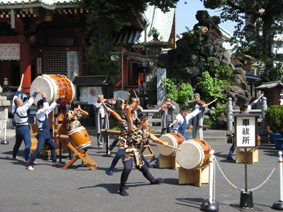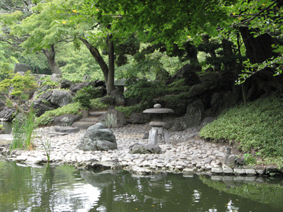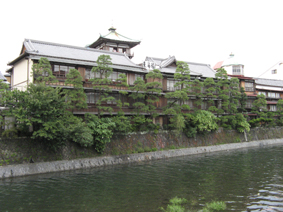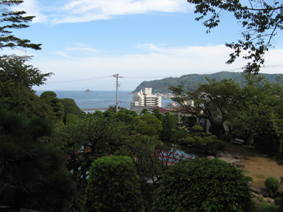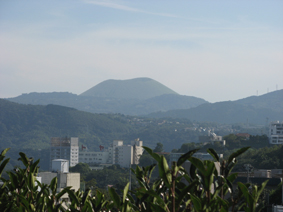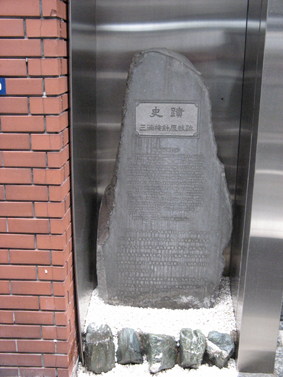| |
Not even a year has past since my first visit to Japan, and here
I am back in the country that fascinates me so. This time my journey
would take me back into the history of Japan.
My longing to see Japan of the old begun in the 1980´s with
a TV-show called “Shogun”. Now I would see the reality
which the TV-show was based upon.
September 2nd, I arrived at Osaka. During my stay here I visited
Sumiyoshi Taisha, a Shinto temple established in the 3rd century
and constructed in an old Japanese style. Next I went to Osaka castle,
a castle from the 16th century. Today it serves as a museum displaying
the life of the founder of the castle, Toytomi Hideyoshi. Down at
the harbor you will find the Osaka Aquarium, one of the biggest
aquariums in the world. Here you will find sea life from all over
the world, from penguins to deep sea crabs.
Three days later I arrive at Nara by train and check in at my hotel
located nearby the Todaiji temple. Nara is established in the year
of 710 and is the oldest of the Japanese capitals. You can see a
lot of deer wandering in the parks and among the temples. I spend
one day at the Todaji temple and the Kasuga Taisha temple. The Todaji
temple, the worlds biggest wooden building, was constructed in the
year of 752 and is home to japans largest Buddha figure. Kasuga
Taisha temple was constructed in the 8th century by one of japans
most powerful clans, Fujiwara. Behind this temple is a more than
1000 years old forest. Because it belonged to the Kasuga Taisha
temple cutting down trees has been forbidden since 841.
September 9th, I leave Osaka for Iga-Ueno, home to some of the ninja
clans. Interesting thing to see here is the Ueno castle, the ninja
museum with working traps and secret passages. Iga-Ueno was also
home of on of japans most famous haiku poets, Matsuo Basho. Trains
running to and from Iga-Ueno are painted as ninjas.
Traveling approx. 1 hour by train from Iga-Ueno, in a nearby valley,
is the home of the Koga ninja. Here, as well as in Iga-Ueno, you
can see a castle and ninja houses. The castle is located close to
a mountain area used by the Koga ninja as their practice ground.
I took a hiking tour in this mountain area and found temples surrounded
by beautiful nature.
Five days later I pack my stuff and travel to Tokyo. Following day
I relax and do some sight seeing in the Tokyo parks, waiting for
my daytrip to Kamakura located one hour south of Tokyo. In 1192
the first shogun of Japan, Minamoto Yoritomo, settled down in Kamakura.
September 16th, I went by train to the Hachimangu temple in Kamakura.
The Hachimangu temple is a Shinto shrine established in 1063. Once
a year, yabusame is displayed at the shrine. In yabusame an archer,
on horseback, is trying to hit targets while the horse is running.
It was really fantastic to see these great archers close by.
Back in Tokyo I spend three relaxing days visiting parks, the Tokugawa
mausoleum and Harajuku famous for the special youth fashion. Nearby
Harajuku the Toyota F1 car was on display. People were invited to
get into the car, so I had to sit the car also.
|
|
September 20th, time for some sumo at Kokugikan, the sumo stadium
in Tokyo. The modern sumo, with professional wrestlers, goes back
to 17th century. The origins of sumo are traceable 1500 years back
and were performed as a ritual at the temples to ask the goods for
good harvest.
Sumo at Kokugikan starts in the morning with the new wrestlers entering
the sumo ring. During the day, the more experienced wrestlers enter
the ring. At four a clock the elite finally enter the ring.
Lunch, consisting of traditional sumo food called chankonabe, was
served at the nearby sumo training facility. The lunch was very
popular with the sumo spectators, as I arrived for lunch at 11.30
a lot of people was already there waiting for the restaurant to
open.
I had to wait for one hour to be served. I had to eat the hot chankonabe
fast because there were a lot of people still waiting to get in
to the restaurant. At six a clock the final match finished and I
returned back to my hotel.
Following three days I used for visiting parks and temples. At one
of the temples I witnessed a traditional Japanese wedding including
music played on traditional instruments. During another walk in
a park I experienced modern Japan sharing space with old Japan.
Next to Kashikawa Korakuen Gardens, established by Tokugawa family
in 1629, is Tokyo Dome, an indoor baseball arena. Tokyo Dome is
situated in an area with shops, restaurants, amusement parks entertaining
the visiting baseball fans.
Later on I went for dinner, chankonabe, at a restaurant owned by
Wakanohana. Wakanohana is a retired Yokozuna in sumo. (Yokozuna
is a champion ranking in sumo.)
September 24th, I temporarily left Tokyo for some recreation at
Ito, located on the coast south of Tokyo. Ito is also known to be
the place where William Adams constructed the first ship, in European
style, for Tokugawa. William Adams is maybe more known as Anjin-san
from James Clavell book Shogun. During three very relaxing days
I did some sight seeing by foot and by boat. Back from the sight
seeing tours in the hot spring baths of Ito. I can also visit a
house including a hot bath and teahouse in Ito. At the hotel I was
served a lot of Japanese food for breakfast and dinner, so I did
not have to have lunch during my stay in Ito.
September 27th, I returned to Tokyo. After checking in at my hotel
I went to Kodokan Judo Honbu Dojo to spend the afternoon and evening
watching judo practice. Next day I visited Anjin-dori, the location
where the house of Anjin-san or William Adams once stood. A memorial
stone can be found at the spot where the house used to be.
My final day in Tokyo I did some shopping and packing for my trip
back home.
A month in Japan passes by very fast. September 30th, was to be
my last day in Japan. This journey gave some insight to the Japanese
history and I want to return to Japan, to continue my exploration
of the Japanese history and nature.
by Esko Karjalainen
|

